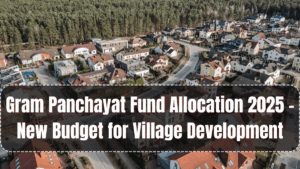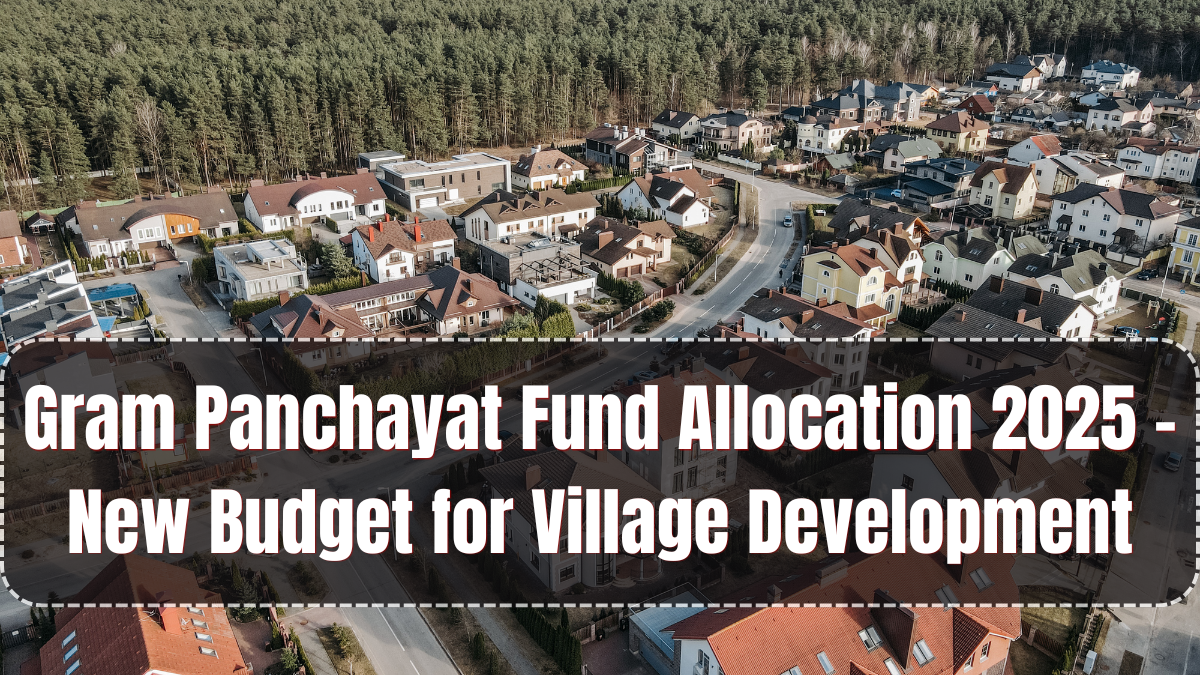In a major move to strengthen rural governance and infrastructure, the Indian government has announced an enhanced gram panchayat funds allocation under the Gram Vikas Yojana 2025. This initiative aims to accelerate village-level development by empowering Panchayati Raj institutions with greater financial autonomy, planning flexibility, and targeted resources.
The 2025 fund release has brought a significant increase in grants compared to the previous year, covering sectors like sanitation, water supply, roads, digital connectivity, health centers, and education infrastructure. This renewed focus on decentralization reflects the Centre’s commitment to inclusive and bottom-up development across India’s six lakh villages.

What Is the 2025 Gram Vikas Fund?
The Gram Vikas Fund 2025 is part of a centrally sponsored scheme that provides financial assistance directly to gram panchayats for implementing local development projects. The scheme is monitored by the Ministry of Panchayati Raj in coordination with state governments and district collectors.
For 2025, the total outlay for Gram Panchayats is over ₹1.3 lakh crore, which includes:
-
Basic grants for routine operations
-
Tied grants for water, sanitation, and waste management
-
Special grants for backward and aspirational districts
-
Incentive grants for well-performing Panchayats under e-governance and Swachh Bharat ranking
Each panchayat’s allocation is calculated based on population, geography, backwardness index, and past utilization record.
Key Features of the 2025 Allocation
The gram panchayat funds disbursed this year come with specific goals and expectations. Here are some important features of the 2025 release:
Increased Tied Grants
More than 60% of the total grant is tied to specific sectors such as:
-
Safe drinking water (Jal Jeevan Mission integration)
-
Village sanitation and soak pit construction
-
Local solid and liquid waste management systems
-
Repair of hand pumps and tube wells
Performance-Based Funding
Panchayats that have demonstrated efficient fund usage, e-gram software compliance, and clean audit records in the past two years will receive incentive grants up to ₹20 lakh per year.
Special Focus on Digital Governance
Grants are also earmarked for upgrading gram panchayat offices with internet connectivity, smart attendance, digital payment systems, and grievance redressal kiosks.
Social Equity Mandate
At least 30% of the development budget must be spent on Scheduled Caste and Scheduled Tribe-majority areas within the Panchayat jurisdiction. Women’s self-help groups and village education committees are also to be directly involved in planning.
Flexibility for Local Priorities
A portion of the untied funds allows panchayats to invest in local priority areas like cattle shelters, community halls, solar lighting, drainage, and school compound walls, depending on village-specific needs.
How Funds Are Released and Used
The 2025 grants are being released in three installments after each quarter, subject to proper documentation and geo-tagged proof of past expenditures. The procedure is as follows:
-
First installment (April–May): Advance transfer based on previous year’s utilization
-
Second installment (August–September): Released post quarterly report submission
-
Final installment (December–January): Based on physical verification of works
Funds are transferred to the Gram Panchayat’s bank account via Public Financial Management System (PFMS) and must be spent through e-Gram Swaraj portal entries to ensure transparency and avoid delays.
Panchayats are expected to upload:
-
Annual action plans
-
Photographs and videos of completed works
-
Vendor payments and beneficiary data
-
Audit reports and social audit summaries
State-Wise Highlights of Fund Utilization
Several states have already begun implementing the gram panchayat funds effectively under the 2025 scheme:
Maharashtra
-
4,500+ panchayats received early disbursement due to clean audits
-
Solar streetlight projects launched in tribal zones
Tamil Nadu
-
Special allocations for flood-prone districts used for drainage upgrades
-
SHG-led toilets and school washrooms constructed
Bihar
-
Drinking water pipeline expansion and road repair prioritized
-
Panchayat Bhawan offices equipped with new IT hardware
Uttar Pradesh
-
12 districts selected under Aspirational Gram Panchayat model
-
Extensive digitization of records and sanitation drives ongoing
Kerala & Himachal Pradesh
-
Model panchayats showcase efficient solid waste segregation and compost units
-
Transparent e-tendering adopted for all fund spending above ₹2 lakh
The central government has also warned against misutilization and mandated random third-party audits in 2025 to keep fund usage clean and productive.
FAQs
How much money is allocated under Gram Panchayat Funds 2025?
Over ₹1.3 lakh crore has been allocated nationwide, with each panchayat receiving between ₹20 lakh and ₹1 crore depending on size, location, and past performance.
What can Gram Panchayats spend the funds on?
Funds can be used for water supply, sanitation, roads, school and health center repairs, digital governance upgrades, and local infrastructure as per approved action plans.
Are there any conditions for getting the funds?
Yes. Panchayats must submit past usage reports, annual development plans, and real-time updates through the e-Gram portal. Performance and audit records also affect the funding.
Can villages use the funds for cultural or social programs?
While the main focus is infrastructure and utilities, a portion of untied funds can be used for community programs, awareness campaigns, or village events, with proper documentation.
What happens if a Panchayat misuses the funds?
Funds may be frozen, and future installments delayed. In serious cases, inquiries and audits are conducted, and district-level officers may take disciplinary actions.
Click here to know more.
